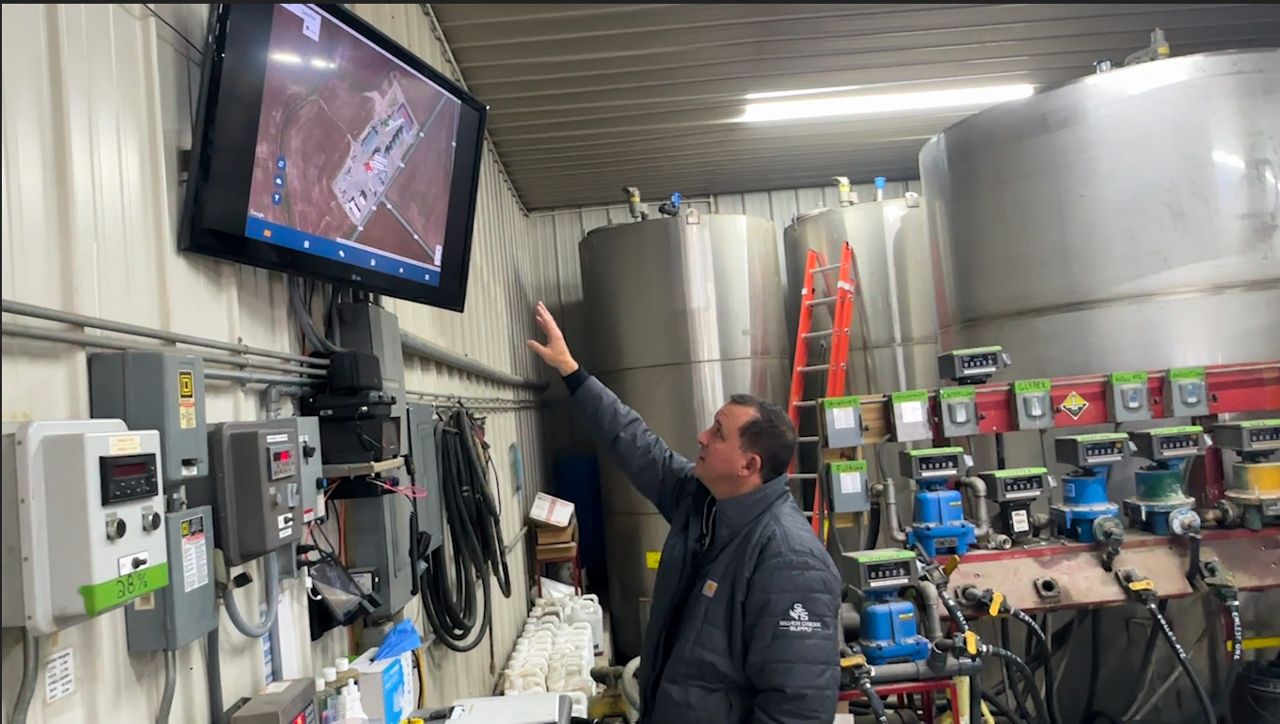KENTON, Ohio – Though most of the hard work takes place on the field, everything that keeps Silver Creek Supply running is inside Tracy Temple’s office.
Located just off of County Rd. 115, in rural Hardin County, the office manages, sells and distributes seeds, fertilizer and equipment to farmers throughout the region.
Keeping track of that inventory and moving it efficiently requires attention to detail, a dedicated staff, and a strong Internet connection — an ingredient that’s been missing until last year.
Moving into the agriculture industry from the chemical business, Temple said he’s been surprised just how essential technology has become to a modern farm.
“The farmer is becoming more educated. They’re using more data to drive their decisions on the farm,” he said. “It’s exponentially more important now than it was 12 months ago, two years, five years ago.”
It means agricultural suppliers like Silver Creek need to keep pace, though until recently, limited Internet access stood in the way.

“I think we were running 10 to 20 Mbps at the highest,” he said.
Outside of those speeds, there wasn’t much available in his area. According to BroadbandNow, one in five households in Hardin County lacked access to Internet speeds up to 100 Mbps and, miles from Kenton, Silver Creek Supply was in that dead zone.
“It slowed us down from simply writing the jobs that we write on a daily basis, getting customer’s product out the door just here at the office,” Temple said.
To improve conditions, Hardin County earned a $6.9 million grant from Ohio Broadband in 2022 to provide access to Spectrum Internet Gig service. It was one of 33 projects across Ohio aimed at improving Internet access for more than 43,000 households thanks to $232 million in state funding.
When he heard the county was getting a boost in its connectivity, however, Temple was eager to upgrade as soon as he could.

“We were so excited, we saw them coming down the street and called every week,” he said. “Because we knew it would have a profound impact here.”
As soon as he got the confirmation the access was there, Temple signed up and a few months in, he said he’s already noticed a massive improvement in efficiency.
“Now we’re able to make decisions for the future based on weather data that we have available,” he said. “We’re able to track everything from fuel consumption, job application, road miles driven.”
With a high-speed connection across his warehouse campus, Temple has worked to build up a technological infrastructure to allow his managing operator to get real-time information about his fleet and what they need to help service employees and move product out more quickly.
Sen. Rob McColley (R-Napoleon), who represents Hardin County and voted for the broadband expansion projects, said he's heard similar stories from business owners and residents as they've gotten newly connected, though there's still a long way to go. Hundreds of thousands of rural Ohioans lack access to high-speed Internet and connecting everyone will take years of investment.
“It’s something that we’re going to continue to fund," McColley said. "It’s something that we’ve received a number of federal dollars from federal grants to be able to help facilitate further broadband expansion and we’re going to continue to make it a priority.”
As more of the county gets connected, Temple said he hopes to add even more technology to his business, helping the company and area farms move further towards modernization.
“It’s amazing," he said, "starting from the seed in the ground all the way through harvesting that grain, that kernel of corn the amount of from the beginning to the end."



